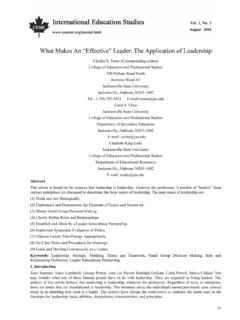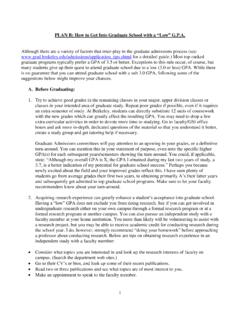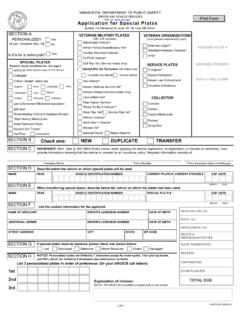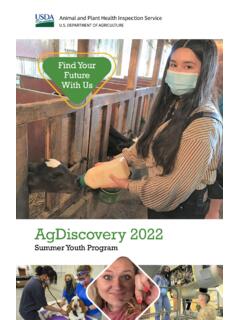Transcription of MIT Application Guide
1 Grrrrr. a pain! Boring questions,parents on your has to be abetter way than filling outall these stupid there is, but(ooops, we sound like parents here)we ve found that this want to get toknow you as well as we it or you can turnthese otherwise stupid formsinto your re looking forwardto learning all about started. Have fun!What emerges fromthe many details is a portrait: the real should we know thattest scores, transcripts, and teacherscan t fully reveal?MIT Application Guide Don t panic. Douglas Adams, The Hitchhiker s Guide to the GalaxySome Intentionally Bad Haiku to Ease the Pain of College ApplicationsOffice of AdmissionsMassachusetts Institute of Technology77 Massachusetts AvenueRoom 3-108 Cambridge, MA POSTAGEPAIDW estboro, MAPermit No. 10034 Checklist 1 ASAP!h Register for a MyMIT account at (See page 12)h Submit Part 1. (See page 13)h Contact your interviewer to schedule your interview. (See page 18)h Give Teacher Evaluations to your teachers.
2 (See page 20)h Give Secondary School Report to your guidance counselor or principal. (See page 21) Before October 20 (Early Action) or December 10 (Regular Action)h Schedule your MIT interview. (See page 18) Before November 1 (Early Action) or January 1 (Regular Action)h Submit Part 2 and all other required Application materials. (See page 15)h Optional: submit music and/or art portfolios; contact MIT coach(es) and/or ROTC. (See pages 22-23) IntroductionsWe re so happy that you are considering applying to re aware that applying to college can be both daunting and exhilarating, especially when you add it to your already-packed schedule of tough coursework, activities, social, and family life responsibilities. You may wonder why the process needs to be so involved and demanding of your at a place like MIT is always based upon the match between you and the Institute s culture, community, and mission. We ve introduced MIT to you through our web site, blogs, publications, and mailings.
3 It s now your turn to introduce yourself to us, through our Application should be a sense of resonance between us. In order to determine that resonance, we really need to understand each other, what our values are, what makes us come alive. A handful of numbers can t do that. So we have to ask you for a whole lot hope to Guide you through a few hours of self-discovery, and we ve tried to make it entertaining along the way. Ideally, you ll look back on our Application and find that you ve actually enjoyed working on have fun with this! Most importantly, just be yourself. We look forward to reading all about the real you. November (Early Action) or January (Regular Action) test datesh Last standardized tests that will be considered in selection committee please plan accordingly! (See pages 24-25) After first semester, first trimester, or second quarterh Have your guidance counselor or principal complete the Mid-year Grade Report.
4 (See page 21) Before February 15h Submit all financial aid materials to Financial Aid Office. (See pages 27-30) 23 A Bit About Us MIT is a unique place with specific core values: We are a meritocracy. We judge each other by our ideas, our creativity, and our accomplishments, not by social status, age, gender, or background. We are relevant. We re proud to generate useful knowledge that makes a difference in the world, changing it for the better. We are entrepreneurial. The key to success at MIT is to have a good idea and be prepared to run with it. We are inventive. While we respect tradition, we are not afraid to abandon the past or to strike out in new or unusual directions in search of a better way to do things. We are unconventional. In an institution where the currency in trade is intelligence, it is okay to be different. Our acceptance of each other frees us up to be our real selves. Does this sound like you? Keep reading.
5 When we admit a class of students to MIT, it s as if we re choosing a 1,000-person team to climb a very interesting, fairly rugged mountain together. We obviously want people who have the training, stamina, and passion for the climb. At the same time, we want each to add something useful or intriguing to the team, from a wonderful temperament or sense of humor, to compelling personal experiences, to a wide range of individual gifts, talents, interests, and achievements. We are emphatically not looking for a batch of identical perfect climbers; we are looking for a richly varied team of capable people who will support, surprise and inspire each Match Between You and MITU nderstandably, we re often asked what makes an applicant the right match to MIT. Here are some key components: Alignment with MIT s mission to make the world a better place. Remember that there are many ways to make the world better we re not looking for applicants to have cured all infectious disease in the world by the time they re fifteen.
6 Tutoring a single kid in math changes the world. Lobbying a senator to change a bad policy changes the world. There are thousands of examples. Collaborative & cooperative spirit. The core of the MIT spirit is collaboration and cooperation. You can see it all over the Institute: many of the problem sets (our affectionate term for homework) at MIT are designed to be worked on in groups; cross-department labs are very common; MIT is known for its interdisciplinary research; the Open Source movement is powerful here; publishing and sharing of results is at the center of academic research. Fostering a collaborative environment is an important part of the MIT community. If you enjoy working alone all the time, that s fine! But you re probably not going to be particularly happy here. Risk-taking. MIT wants to admit people who are not only planning to succeed, but who are not afraid to fail. When people take risks in life, they learn resilience as a result risk leads to failure as often as it leads to success.
7 The most creative and successful people and MIT is loaded with them know that failure is part of life and that if you stay focused and don t give up, goals are ultimately realized. Hands-on creativity. MIT is an active, hands-on place. Innovation is risky and messy! Getting your hands dirty and trying something new is often the best way to achieve success. We apply theoretical knowledge to real-world problems here; our Latin motto means Mind and Hand. In other words, you shouldn t just enjoy thinking, you should also enjoy doing. Intensity, curiosity, and excitement. In a nutshell: you should be invested in the things that really mean something to you (we re not particularly picky as to what). Choose quality over quantity we don t expect you to do a million things. Tell us about those few things you ve put your heart into and you truly care about and that will be enough. The character of the MIT community. Our community is comprised of good people.
8 People who take care of each other and lift each other up. People who inspire each other to work and dream beyond their potential. We re looking to admit people who by nature will sustain the qualities of this course this is not an exhaustive list, and remember that no one profile no matter how impressive represents the perfect match. It takes all of us working together to create that which is a huge part of what makes MIT the powerful community that it : A Brief OverviewMIT: A Brief OverviewStuff on whom you ll meet,what you ll study, where you ll live,and ways to have fun. Whom you ll find here Undergraduates 4,172 undergraduates (45% women, 55% men) 20% are underrepresented minorities (African American, Hispanic, Native American) 9% are international, representing over 90 countries All 50 US states represented (most represented: California, New York, Massachusetts, Texas, Florida) 28% major in science, 2% in architecture and planning, 58% in engineering, 4% in the humanities, arts, and social sciences, and 7% in management Faculty 1,008 faculty members (all teach classes and do research) 7 Nobel Laureates 19 MacArthur Fellows 4 Pulitzer Prize winnersYour majorWhen you apply to MIT, you don t apply to a specific school or department; you apply to MIT as a whole.
9 At the end of their freshman year, students choose their major from among any of the 47 degree programs in 31 academic departments offered at MIT. Students are free to select any major; there is no separate Application process for entry into a major, department, or school. Approximately 15% of our students choose to double major; you may also choose up to two studies At MIT, undergraduates receive bachelor of science degrees. To earn a degree, all undergraduates must complete a core requirement that is equally divided between science and mathematics, and the humanities, arts, and social science/mathematics requirement includes chemistry, biology, physics, and calculus, as well as laboratory and science electives. The humanities, arts, and social sciences requirement must be fulfilled in three out of five categories: literary and textual studies; language, thought, and value; the arts; cultures and societies; and historical studies.
10 Students must also complete a four- subject communication research The Undergraduate Research Opportu- nities Program, or UROP, supports undergraduate and faculty collaboration on research projects. Founded in 1969, UROP has revolutionized undergraduate participation in research and serves as a model for undergraduate research programs in academic institutions across the country. UROPs are a chance to gain significant research experience and can be done in numerous areas such as cancer research, cognition and language processing, alternative energy, educational innovation, the humanities, nanotechnol-ogy, finance, genetics, bioengineering, service learning, and more. The possibili-ties are endless. Students usually join a faculty member s project, but they may also design their own and recruit faculty to advise them. Students can earn academic credit or pay, or work as volunteers. The program is open to all students, including freshmen, and supports research in any department.















